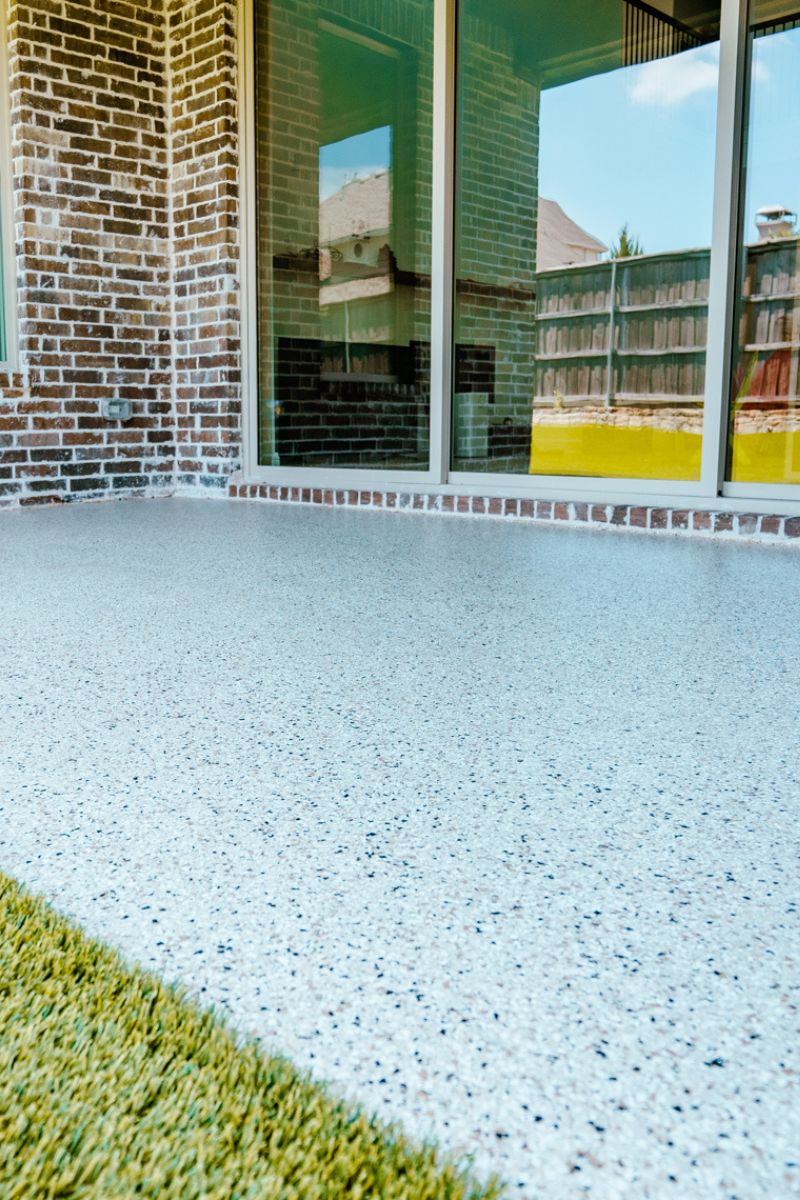
Epoxy floors are a popular choice for their durability, resistance to chemicals, and attractive glossy finish. However, not all situations or environments are suitable for epoxy floors. The decision to use epoxy flooring depends on factors like the type of space, its usage, and potential challenges. Here are some considerations for where to use epoxy floor coating and where not to:
Epoxy flooring are commonly used in industrial facilities, warehouses, factories, and commercial spaces due to their ability to withstand heavy foot and vehicle traffic, as well as resistance to chemicals and spills.
Epoxy floors can be used in wet areas like bathrooms, locker rooms, and swimming pool decks due to their water resistance and easy maintenance.
Epoxy floors provide a sleek and professional appearance, making them suitable for showrooms, retail stores, and other spaces where aesthetics are important.
Epoxy floor coating are preferred in healthcare settings due to their resistance to germs, chemicals, and ease of cleaning, making them suitable for hospitals, clinics, and laboratories.
Epoxy floors meet hygiene standards and resist staining from food and beverage spills, which makes them suitable for kitchens, restaurants, and food processing plants.
While epoxy coatings offer benefits such as durability and a sleek appearance, they might not be the best fit due to sensitivity to UV rays, which can lead to yellowing and deterioration in sunlight. Epoxy is also prone to “hot tire pickup,” where heat from parked car tires can cause the coating to stick and peel. Surface preparation challenges arise if your garage floor has cracks or imperfections, affecting proper adhesion. Repairs to epoxy floors can be complex, and the initial investment might not always match its longevity and potential maintenance. Alternatives like Polyaspartic floor coating, interlocking tiles, or rubber mats offer more forgiving solutions that can handle the garage environment without the downsides of epoxy.
Everything you need to know about Polyaspartic garage floor coating.
Epoxy requires a clean, smooth, and properly prepared surface for proper adhesion. If your subfloor is uneven, cracked, or damaged, it may not provide the ideal base for epoxy application.
Epoxy can soften and degrade in high-temperature environments, so it’s not suitable for spaces that experience extreme heat, such as near furnaces or ovens.
While epoxy is water-resistant, excessive moisture and water exposure can lead to delamination or other issues over time. In such cases, other flooring options like tiles might be more suitable.
Epoxy application requires careful surface preparation and proper mixing to ensure a successful and durable installation. DIY installations without proper knowledge and equipment might result in unsatisfactory outcomes.
Epoxy is a semi-permanent flooring solution, so it’s not ideal for spaces that might need to be changed frequently or where you don’t have control over the space’s long-term use.
Epoxy coatings are a popular choice for residential garages. They create a seamless and easy-to-clean surface that can withstand the weight of vehicles and resist oil and grease stains.
In summary, epoxy floors are an excellent choice for indoor spaces that require durability, resistance to stains, and an appealing finish. Workshops, commercial areas, and moisture-prone rooms benefit from epoxy’s properties. However, it’s essential to avoid using epoxy in outdoor or semi outdoor areas such as garages, uneven surfaces, and in high-temperature zones, as these conditions can compromise its performance.
When deciding on flooring options, consider the specific needs of your space and the conditions it will face. By understanding where epoxy floors excel and where they fall short, you can make an informed decision to create a functional and attractive environment.
Remember, whether it’s your home, business, or personal project, choosing the right flooring is a crucial step towards creating a space that meets your needs and stands the test of time.
Ready to transform your garage? Visit MyGarageFloors.com for an instant online estimate and to schedule your Polyaspartic garage floor coating installation. No more hassle, just a smooth process to make your garage floor the envy of the neighborhood. Trust us to guarantee the lowest prices and provide a lifetime warranty. Get started now at MyGarageFloors.com.
Stop wasting time on sales meetings.
Save your time and avoid their commission. Get your garage floor coatings installed today at the lowest price.
Check pricing
469-990-9990
Mygaragefloors.com is an online platform with in-house installers dedicated to helping homeowners upgrade their garage floor with a superb Polyaspartic floor coating at the lowest price in the nation.



Lots of companies claim to use Polyaspartic, but they only apply it for the final coat.
Using a mix of Epoxy or Polyurea for the base coat can lead to yellowing and peeling over time.
Insist on a full Polyaspartic system for both base and top coats.